Cairo International Airport (Arabic: مطار القاهرة الدولي) is the principal international airport of Cairo and the busiest airport in Egypt and serves as the primary hub for EgyptAir and Nile Air as well as several other airlines.
The airport is located in Heliopolis, to the northeast of Cairo around 15 kilometres (9.3 mi) from the business area of the city and has an area of approximately 37 square kilometres (14 sq mi).
It is the second busiest airport in Africa after OR Tambo International Airport in Johannesburg.
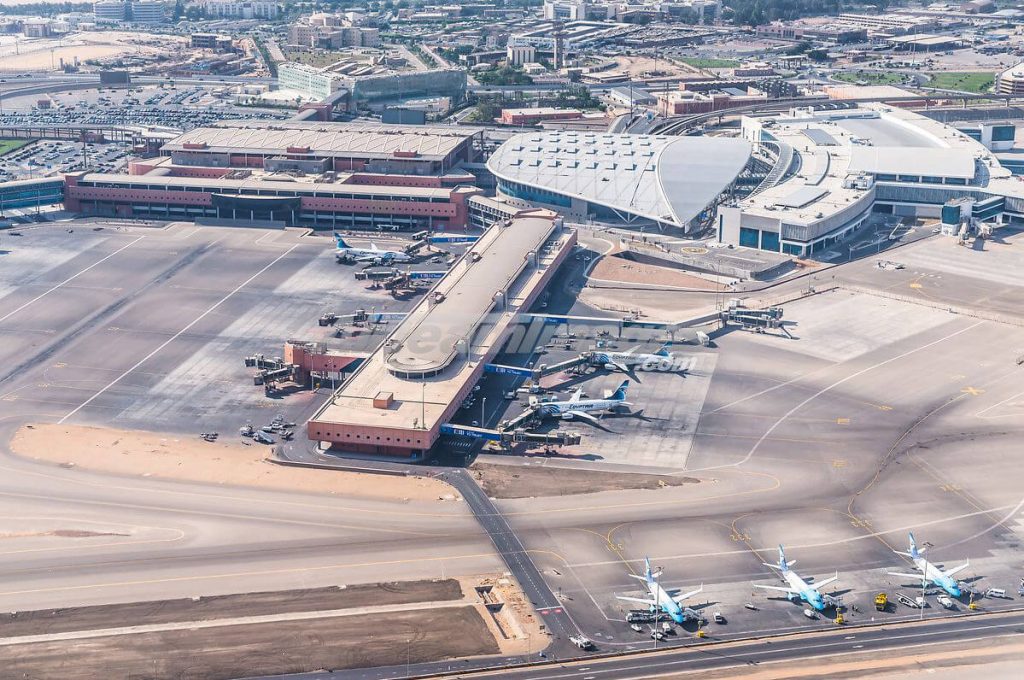
History
- Cairo International Airport history started in the fourties of the last century when the American Bayn Field air-force base was established five kilometers far from Almaza Airport to serve the Alliance during the Second World War. The American forces left the base by the end of the war.
- In 1945, the Civil Aviation Authority took over the base and allocated it to the International Civil Aviation. The Airport was called “King Farouk 1st Airport”. In the meantime, Almaza Airport was dedicated to the domestic flights.
- It is worth mentioning that the Air Traffic Movement during that period, particularly in 1946, was 200.000 passengers a year. The peak hour capacity of the Airport reached 200 passengers per hour.
- In 1955, some studies were done to build a new terminal with a higher capacity; the location of the new terminal was chosen between the two runways, east of Cairo. The works of construction started in 1957 and has been inaugurated on 18th of March 1963.
- In 1963, Cairo International Airport replaced the old Heliopolis Airport located at the Hike-Step area in the East of Cairo. It consisted of arrival and departure halls, a transit hall and two runways with a capacity of five million passengers a year.
- As air transport rates went up to 55 % in the seventies, a second hall was constructed in 1977-79 and a third added in 1980.
- In the Eighties, air transport rates increased again and a second terminal became a necessity. Terminal Building 2 with its two arrival and departure halls, a transit hall and a runway, was constructed to serve 3.5 million passengers per year.
- With the increase in Air Traffic Movement and the demand for international service standards, there was a need for developing the airport’s facilities . As a result, Cairo Airport Company started a major renovation and development plan on the transit hall in Terminal 1. It has been finished by the end of 2003 with a cost of US $ 12, 000,000. The consultant designer company for the project is ECG “Engineering Consultants Groups” S.A. Cairo, Egypt.
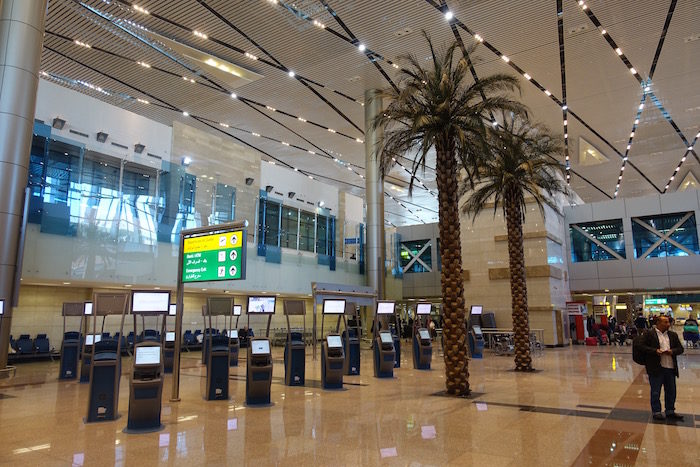
Terminals
The terminal facilities include Departure Hall 1, International Hall 3, and Hall 4 for private and non-commercial aircraft services.
As part of the recent upgrading and facility improvement scheme, the CAA demolished the old Hall 3, previously used for domestic arrivals and departures, to reconstruct a new hall to be used for international arrivals.
Terminal 1 is locally known as the “Old Airport,” although its facilities were recently given a complete overhaul and are newer than those of Terminal 2, which is still known as the “New Airport.”
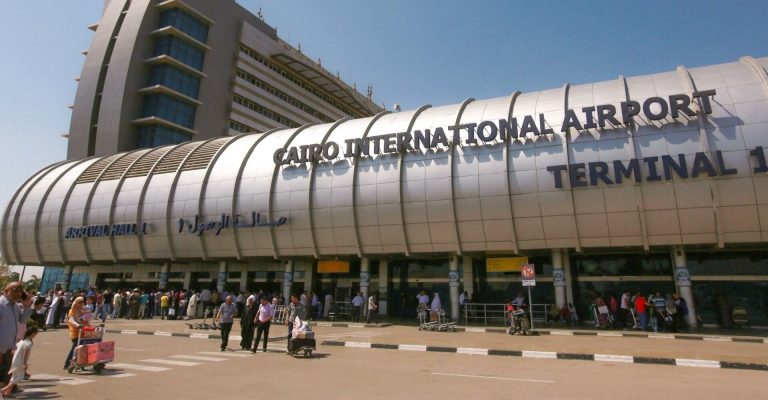
Terminal 1
Terminal 1 was originally used by EgyptAir and several Middle Eastern airlines. However, an increasing number of other foreign carriers, such as Air France and KLM transferred operations from Terminal 2 in 2006.
In May 2009 EgyptAir moved all its operations to the new Terminal 3 (along with all Star Alliance airlines serving the airport).
In March 2010, with the closure of Terminal 2 for major renovation works, all non-Star Alliance airlines serving the airport shifted operations to the terminal.
The CAC has inaugurated the “Airport City Concept” to provide an array of services and entertainment facilities to travelers, airport visitors, as well as the general public. The first phase, a new shopping mall called the ‘AirMall,’ has been built near Terminal 1’s International Arrival Hall 3.
As of 2009 the facade of the terminal was being upgraded. A study on reorganizing the departure and arrival halls is ongoing as well as the feasibility study to include contact stands to improve the service and comfort levels to the passengers. Terminal 1 has 12 gates.
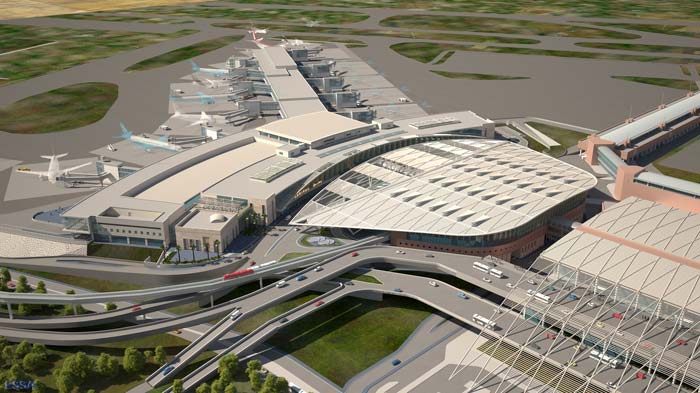
Hall 4
Terminal 1, Hall 4 is dedicated to private and executive jet services. Even though it is referred to as a ‘Hall’ under Terminal 1 it is operated independently from the commercial passenger terminal.
Smart Aviation Company has been based at the building since 2007; it moved to a new executive FBO in 2010 adjacent to Hall 4.
Terminal 2
Terminal 2 was inaugurated in 1986 with 7 boarding gates. It primarily served European, Gulf and East Asian airlines.
The terminal was closed in April 2010 for complete renovations starting in 2012 and lasting 36 months.
The architecture of the building limited the opportunities for further expansion which necessitated the entire building to be closed for major structural overhaul at an estimated cost of approximately $400 million.
After several project delays, the renovated terminal had its soft opening on 28 September 2016 with a capacity of 7.5 million passengers bringing the airport’s total passenger capacity to 30 million passengers annually. The new terminal has 14 gates and an additional 5 remote stands.
During February 2017, Saudi Arabian Airlines launched its first international “Al-Fursan lounge” at Cairo International Airport Terminal 2. The 1,500 square-meter lounge can accommodate 300 people at a time.
The renovated terminal is operating jointly with Terminal 3 as one integrated terminal via an air bridge, thus, reinforcing the role of Cairo International Airport as a regional hub.
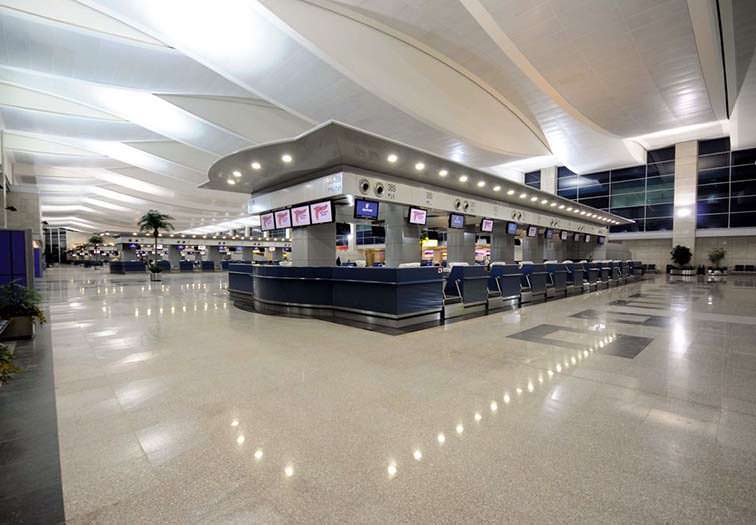
Terminal 3
The terminal was officially inaugurated on 18 December 2008 and opened for commercial operations on 27 April 2009.
The facility is twice as large as the current two terminal buildings combined, with the capacity to handle 11 million passengers annually (6 million international and 5 million domestic) once the first phase is completed.
It is adjacent to Terminal 2, and the two terminals are initially connected by a bridge.
With its hub at the airport, EgyptAir’s operations were overhauled with the full transfer of its operations (international and domestic) into the new terminal between 27 April and 15 June 2009.
To implement the Star Alliance “Move Under One Roof” concept, all Alliance members serving the airport were relocated to the terminal by the first of August 2009.
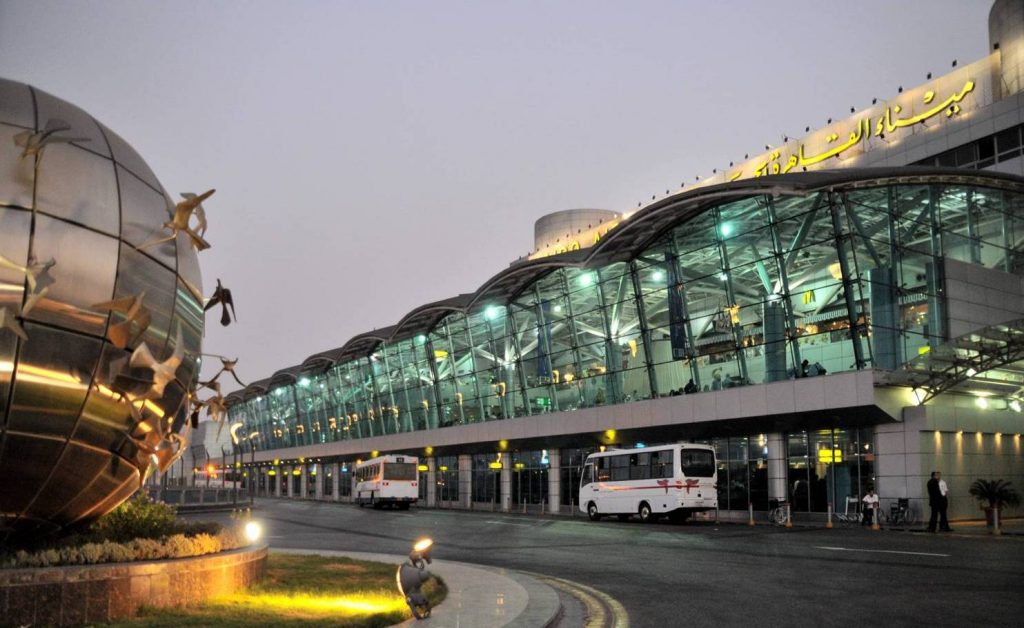
The new terminal includes:
Two piers of extendable capacity and gates facilities serving domestic and international traffic on contact and remote stands.
The main building and the piers are connected by concourses. Two of the gates are equipped to handle Airbus A380 aircraft. Provisions for a third pier are in the planning stages.
Terminal 3 has 23 gates (2 gates for the A380), 6 check-in islands consisting of 110 check-in counters (plus 10 mobile counters and 10 CUSS kiosks), 76 immigration counters (plus 5 biometric gates), 52 contact and remote aircraft parking stands (5 with multiple uses), 425 FIDS, 15 public information points, 7 baggage carousels, 63 elevators, 50 moving walkways and 51 escalators.
Retails space covers more than 5,000m2 (4.034m2 occupied by EgyptAir Tourism & Duty Free Shops).
International food court with Oriental, Asian and Western food (incl. Burger King, Hippopotamus, Upper Crust).
Landside roads including bridges and fly-over serving the traffic to and from the terminal building, surface car park areas (multi-story parking garage capable of holding more than 3,000 cars), a new access road connecting the airport with the Autostrad road (Cairo ring road) and upgrading the access roads.
Seasonal flight terminal
On 20 September 2011 Prime Minister Sharaf inaugurated the new Seasonal Flights Terminal (ST), located west of Terminal 3. During the start-up phase EgyptAir operates its daily flight to Medina from the new Terminal.
All Hajj traffic of EgyptAir will move to the ST while Saudia’s Hajj flights will still operate from Terminal 1. More destinations might be added during winter.
The terminal has an annual capacity of 3.2 million passengers with 27 check-in counters and 7 gates with a common gate and single security concept, the first in Cairo.
It is designed to handle 1,200 passengers per hour. Passengers will be bussed to remote aircraft stands around Terminal 3. Its purpose is to ease operational strains on the existing terminals during pilgrim seasons.
Airport Hotel
A luxury 350-room five-star Le Méridien hotel opened in front of Terminal 3 in December 2013.
The hotel is linked to the terminal by a 230-metre-long (750 ft) skyway that is also equipped with a moving walkway.
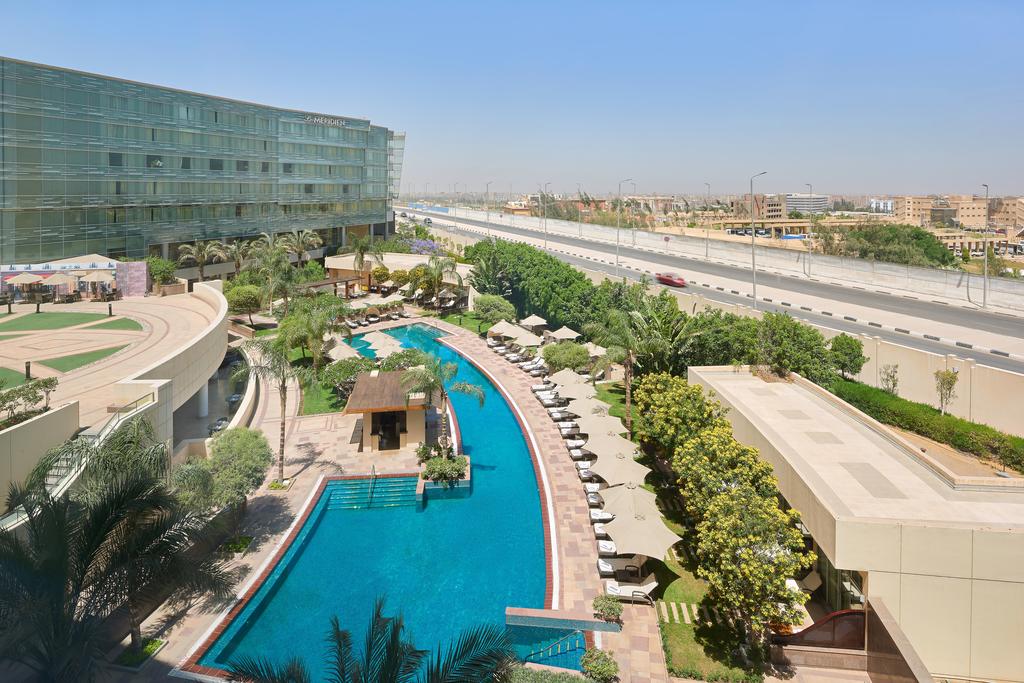
Cairo International Airport Data
- Country
- Egypt
- Region
- North Africa
- Status
- In use
- Official name
- مطار القاهرة الدولي
- Location
- Heliopolis, Cairo, Egypt
- Official website
- cairo-airport.com
- Operator(s)
- Cairo Airport Company
- Opened
- 1963
- Airport type
- Public
- Airport code
- IATA: CAI, ICAO: HECA
- Airport area
- 9143 acres / 37 km²
- Runway length
- 1*3301 m,1*3999 m,1*4000 m
- Passenger traffic
- 14.7 million(2019)
View Cairo International Airport on Google Satellite Map
Google satellite maps allow you to see building details more clearly, including natural landscapes such as mountains, rivers, deserts, sea and man-made engineering buildings.
If you are very interested in this engineering building, it is a good idea to click below Google Map icon. We will help you jump to the corresponding location of this building or engineering on Google satellite map.





























































